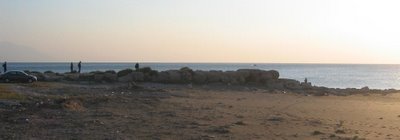
The celebration of the Jewish festival of Chanukah (sometimes written as Hanukkah) remains a mystery to many Bible believers. It begins this year on Friday, December 15, at sundown. Its beginning is on the Jewish Shabat this year. The date is Kislev 25 on the Jewish calendar. It continues for eight days in commemorating the tradition that the oil for the light in the Second Temple (the one built in the time of Haggai and Zechariah – completed in 516 BCE) was sustained so that the Maccabees could finished [sic] their victory over Antiochus Epiphanes and the Seleucid domination of the Holy Land. The Temple was then cleansed from its pagan defilement.
Jewish People give gifts to one another on each day of this celebration, usually beginning with a small item that does not cost a great deal. Each day the gifts increase in value.
The prominent symbol of the celebration of Chanukah is a Menorah with nine branches instead of the seven used for the Temple Menorah (lampstand). The four branches on each side of a central candle (total of eight) represent the eight days that tradition says the light of the Temple was sustained miraculously by the oil. The arguments among Jewish scholars over the significance of the central candle continue to this day, but the prevalent view of rabbinical tradition is that the central candle refers to the light of the Messiah Himself!
That seems to match what we read in the Gospel of John. In John 10:22 we read that our Lord Yeshua was present at this “feast of dedication” in Jerusalem, and it was “winter.” In John 7:2 we know that the events of that chapter were clearly at the time of the “feast of Tabernacles” which comes in the fall in the month of Tishrei (Tishrei 15-22), which is the seventh month o the Jewish calendar. The following month is Cheshvan, and immediately following is the month of Kislev when Chanukah is celebrated. So, the period of time between the events of John 7 and John 10 is approximately 63 days. Some Biblical scholars believe that there is a slight “time gap” between John 7 and John 8, the story of the women taken in adultery. In John 8:12 Yeshua said: “I am the LIGHT of the world: he that followeth Me shall not walk in darkness, but shall have the light of life.” Similar words were spoken by our Lord in John 12:35-36, 46.
In John 8:20 we learn that the words of our Lord Yeshua about being the “LIGHT of the world” were spoken in the “treasury” as He “taught in the temple.” If the occasion was connected with the celebration of Chanukah, then we know that giant candelabras were lit in that area of the Temple during the festival; and all the way from Amman, Jordan, it looked like Jerusalem was on fire (remark in the writings of Flavius Josephus)! It appears from the closing words of John 8, that Yeshua escaped an attempt to stone Him. John 9 is the story of the man born blind who was healed by our Lord. It is possible that the words of John 10 about the Shepherd and His sheep should be connected with the story of John 9. In any case, by John 10:22 we are now at the “feast of dedication (Chanukah).”
This celebration is known as the “festival of lights,” and many scholars believe that all the “lights” associated with the celebration of Christmas actually have their roots in the Jewish festival of Chanukah.
Reprinted from
Hope for Today Newletter Volume XI Number 12 - “What is Chanukah” by David Hocking










 The Ecumenical Councils took place right here
The Ecumenical Councils took place right here


